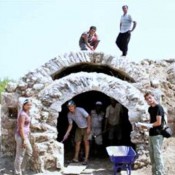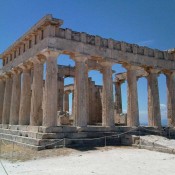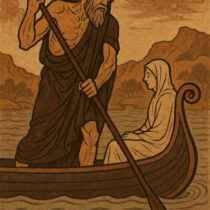In the framework of a project of the German Archaeological Institute fragments held in the National Museum in Tehran were reconstructed to a most impressive evidence of the Hellenistic era in Iran.
The battered, larger than life Bronze statue came to light in 1936 in the rubble of a sanctuary from the 3rd/ 2nd c. BC in the Khuzestan Province of Iran. As the six statue fragments were discovered at different times and transferred to the Museum of Tehran, they were exhibited in different sections of the museum. In August 2015 they were put side by side and a partial reconstruction of the statue proved possible.
Three fragments were assembled to form a raised left arm. This helped to conclude the posture of the statue: the left hand held a spear, a typical depiction of Hellenistic rulers.
The investigations focused on the head of the statue. It was severely damaged and thus it was impossible to identify who it was depicting. In order to reconstruct the original features, a digital 3D model was created by using a photogrammetric method. Then the forms of the right side of the face – which was better preserved – were mirrored and provided with the texture of the left half of the face. Missing parts of the face were filled in at the model. At the end of the project a polymer 3D print of the head will be handed over to the Museum.
The statue is the most impressive testimony of the Hellenistic era in Iran. Its reconstruction aims at highlighting its quality and relevance.




